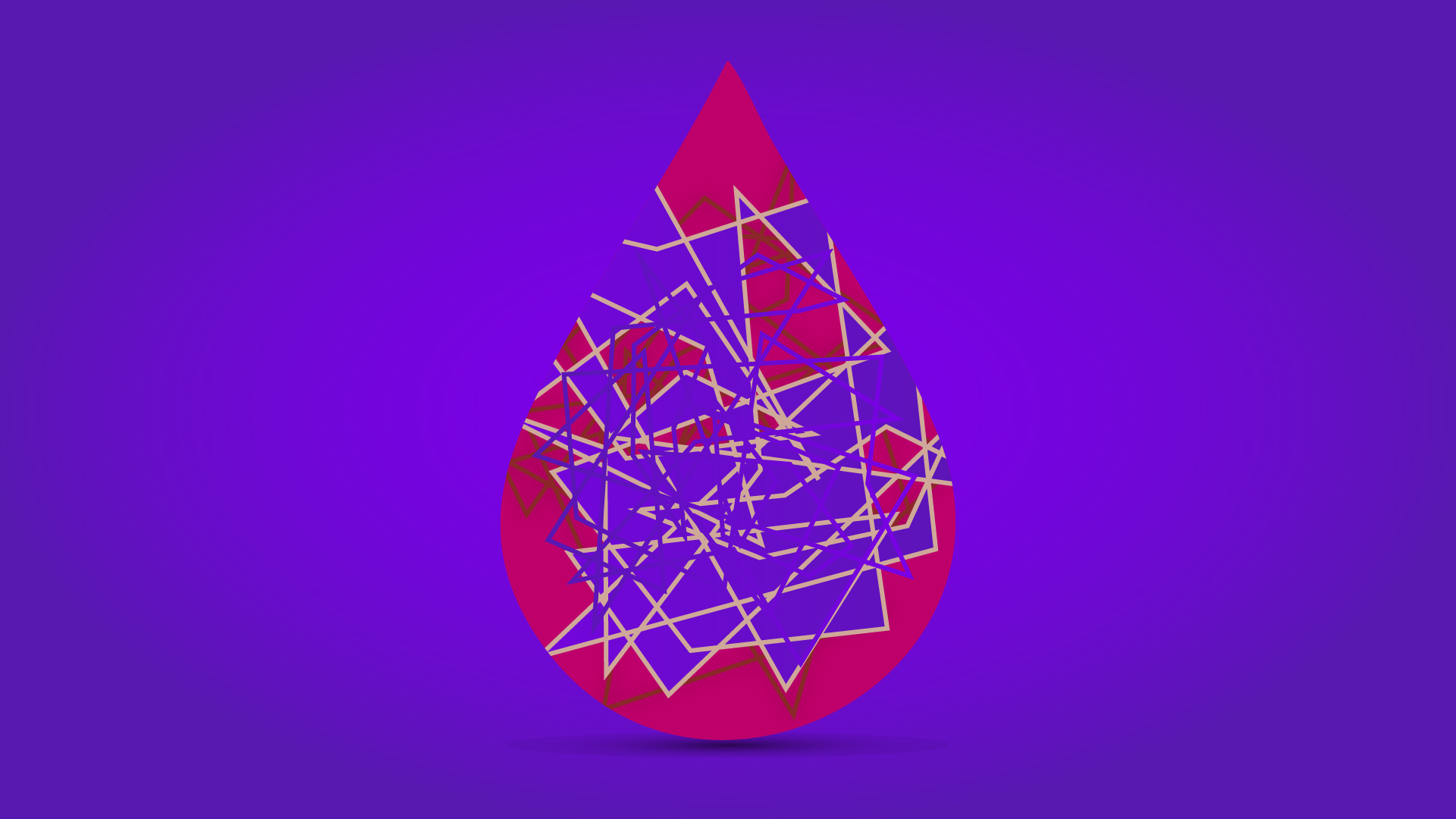Summary
A young boy goes to urgent care, he’s fallen and his knee is swollen – likely a soft tissue trauma or at worst a minor joint bleed. He’s given a brace, told to rest. Nothing alarming. At follow up, everything is as expected – that is, until a nurse reviews his chart and notices that something in his history doesn’t add up. The child has hemophilia. We’re no longer talking about a routine sprain or minor joint bleed, we’re talking about a joint bleed that, if left untreated, could lead to permanent damage. That chart review – that one small moment – is the first act of collaboration. And it will be more collaboration, follow through, and a building of trust that will dramatically change the outcome of this story.

Amanda Greene, MSN, RN
Director of Clinical Programs, Pediatrics
Amanda is the Director of Clinical Programs, pediatrics for Hemophilia of Georgia Center for Bleeding & Clotting Disorders of Emory and has been a member of the team since 2015. Her background consists of a variety of roles and specialties, including Neonatal Intensive Care and Pediatric Hematology/Oncology Inpatient Nursing. She completed her BSN and MSN in Nursing Education from the University of West Georgia. She prides herself on helping others by being an advocate for her patients and families and continues to develop herself as a leader within the bleeding disorder community.
Transcript
DDx SEASON 12, EPISODE 2
The Injury That Could Have Laster a Lifetime
DDx Script: The Injury That Could Have Lasted a Lifetime
RAJ: This season of DDx is produced in partnership with and sponsored by Sanofi.
Some details of this case have been changed for clarity and privacy.
Nurse Greene: Honestly, I laughed out loud ’cause I was so frustrated. And just overwhelmed by the fact that his diagnosis was missed. I definitely would describe it as pretty serious.
RAJ: This is DDX, a podcast from Figure 1 about how doctors think.
I’m Dr. Raj Bhardwaj.
If you work in healthcare, you’ve felt it—that moment when communication breaks down.
Someone sees something, but the message doesn’t land.
A therapist notices a change. A nurse flags a concern.
But the loop doesn’t close.
And that’s where patients can get lost.
This season on DDx, we’re going inside hemophilia treatment centers—places where teamwork isn’t optional. It’s what holds everything together.
You’ll hear stories from the people who do this work every day—how collaboration really works, what it looks like in real time, and what happens when it breaks down.
These aren’t hypotheticals. These are real patients, real decisions—and real consequences.
Amanda Greene knows what it looks like when care falls through the cracks. 2
She’s a registered nurse and the director of clinical Hemophilia Treatment programs at Emory University at Children’s Healthcare of Atlanta.
And she was part of the team that saw what others missed—just in time.
CHAPTER 1: A NORMAL INJURY—OR SO IT SEEMS
RAJ: Our story begins in urgent care. A boy, a fall, a swollen knee.
He’s given a brace, told to rest. Nothing alarming.
Orthopedics sees him the following day.
They suspect a growth plate injury or soft tissue trauma. Standard protocol.
But here’s where it pivots. An orthopedic nurse reviews his chart and notices something in the history that doesn’t add up.
CHAPTER 2: THE REVEAL—AND THE RISK
Nurse Greene: She noted that he had hemophilia, which I think drew her to the fact that, you know, was this an injury of the joint or was it, the soft tissue around it?
RAJ: This boy–let’s call him Mateo has moderate Hemophilia A.
Diagnosed at age four after a tongue injury which bled for weeks.
And that day in urgent care, they treat his knee, but miss this diagnosis in his chart.
Now we’re no longer talking about a routine sprain.
We’re talking about a possible joint bleed.
The kind that, untreated, can lead to permanent damage. 3
Nurse Greene: Ultimately untreated bleeds can lead to long-term effects with arthritis as well as just joint immobility. So treating an injury as soon as possible is imperative.
RAJ: That chart review—that one small moment—is the first act of collaboration.
The ortho team reaches out to the hemophilia treatment center.
Nurse Greene: For us, we were kind of blindsided. So he injured his knee at school on a Monday, and we didn’t hear about it until Wednesday. We were behind the eight ball, and the treatment he needed was his factor replacement.
RAJ: Factor replacement is a medication that helps blood clot—it’s what people with hemophilia need after an injury to stop bleeding before it causes lasting damage.
But the problem is—Mateo hasn’t gotten that treatment.
Not the day of his injury, not the day after.
Once Nurse Greene’s team realizes that, they know they’re already behind—and that’s when everything clicks into high gear.
CHAPTER 3: THE SYSTEM RESPONDS
RAJ: Calls go out across the system—outreach nursing, social work, hematology, the emergency department—all working together to get this boy the treatment he needs before things get worse.
Nurse Greene: So it was actually happening simultaneously. The orthopedic nurse had contacted our hematologist at the same time an outreach nurse was reaching out to our nursing department as well. 4
RAJ: For Mateo, getting treatment isn’t just about making the right clinical call. There are barriers.
The first is language. His parents speak Spanish. Their English is limited.
And that makes everything harder—from understanding instructions… to asking the right questions… to even knowing what to do next.
Nurse Greene: So interpreting services was needed, whether in person or via a telephone.
RAJ: When a nurse goes out to the house to give him his medication, she faces another problem: she can’t get a vein.
Nurse Greene: Secondly, we ran into issues with access. So peripheral access, being able to access a vein at home with a peripheral needle and being able to give him his medications.
RAJ: At this point, the team knows—this boy needs to be admitted to the ER.
Nurse Greene: Then our next step was to get him to the hospital where he could be seen evaluated and potentially admitted for medication.
RAJ: But there’s one more complication—no one in Mateo’s family has a way to get him there.
Nurse Greene: The family had no ride to the emergency room. The family had barriers, they had to work.
RAJ: Nurse Greene is in clinic that day.
Nurse Greene: It was very hard, and I’m very empathetic. I understand I’m a mom myself.
RAJ: She phones Mateo’s mom. 5
Nurse Greene: I was on the phone for 30 to 40 minutes. It was very much a conversation to make mom understand the importance of why he needed to be seen and why we were behind in treatment. Because he had not had an injury this big where he needed multiple doses over days.
RAJ: The team moves fast and finds a solution.
Nurse Greene: Outreach nursing connected with their VP of programs as well as their social worker to see what they could do to supply transportation resources and were able to set that up.
RAJ: A letter is offered to Mateo’s mom to explain her absence from work, and the team calls ahead to prepare the ER for his arrival.
Nurse Greene: And then our job was to collaborate with the emergency room to tell them, you know, this patient was coming in what we likely expected and where we saw the treatment going from there.
RAJ: Mateo gets to the hospital, receives treatment, and is admitted for observation. After that, everything starts to fall into place.
Getting a vein is tough, so the team makes sure he has a nurse with experience—someone who can get the treatment done without turning it into a struggle.
Mateo begins infusions. His school is looped in—teachers, nurses, everyone knows how to support him.
Because at this point, it’s not just about treatment. It’s about trust.
Nurse Greene: It’s not necessarily just medical, it’s personal too. Connecting with patients and families is the most important thing that we do. We become the first line of defense, the first one they call and the first one that knows what’s going on. 6
CHAPTER 4: RECOVERY AND CONTINUITY
RAJ: Mateo goes home on daily infusions, then shifts to twice-weekly doses.
At follow-up, his knee is healing. Physical therapy begins, and once things stabilize, he returns to on-demand treatment.
With treatment in place and his recovery on track, things start to feel normal again.
Nurse Greene: He’s doing great at school. He’s even planning to attend summer camp which is I think a huge thing for him. He’s really excited for the summer.
RAJ: In the end, it isn’t heroics. It’s teamwork and follow-through that makes the difference.
Nurse Greene: There were a lot of phone calls, there were a lot of emails and just the follow through and follow up that preceded each event and just kind of seamlessly made things fall into place.
RAJ: But that kind of coordination doesn’t just happen. It takes trust—built over time—and a shared understanding that every role, every voice, carries equal weight.
Nurse Greene: Trust and understanding is huge in regards to teamwork. Everybody’s supported. there’s no hierarchy. We’re all on the same level of playing field, and we all learn from each other.
RAJ: Trust makes room for attentiveness—the kind that allows someone to notice what others might overlook. Because sometimes, good care begins not with a diagnosis, but with a question.
Nurse Greene: It’s one simple question you could ask that could identify an issue. You know, you have a patient that comes in with swelling. Do you have a family history of bleeding? Is this swelling? Is it blood or is it just inflammation? So just asking those questions can potentially get a treatment faster. 7
CLOSING: LESSONS
RAJ: This case is a reminder that good care hinges on paying attention to the small details, and working together to act on them. And for clinicians, there are a few key lessons worth carrying forward.
A routine injury isn’t always routine—especially when a bleeding disorder is in the background. Every injury deserves a second look.
Reviewing a chart made all the difference. That single detail is what set the whole care response into motion.
Social barriers mattered just as much as clinical ones. No transportation, language challenges—all of it delayed care.
And most importantly: Doctors, nurses, outreach teams, social work—every voice made this outcome possible.
Mateo’s knee was saved by not just medication—but by conversation.
And that’s the takeaway: better outcomes happen when people talk to each other—across specialties, across silos, across the invisible walls of our healthcare systems. Because collaboration isn’t a bonus. It’s the difference between “We caught it in time,” and “We wish we had.”
SHOW CLOSING
RAJ: Thanks to Amanda Greene for speaking with us.
This is DDX, a podcast by Figure 1. Figure 1 is an app that lets doctors share clinical images and knowledge about difficult-to-diagnose cases.
I’m Dr. Raj Bhardwaj, host and story editor of DDX. 8
Head over to figure1.com/ddx where you can find full show notes, speaker bios and photos.
This season of DDX was produced in partnership with and sponsored by Sanofi.
Thanks for listening!





